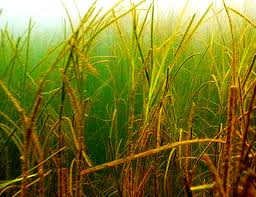This week I was invited to Pheobe Fine's home (Fine Design in Seattle) in Ballard to watch the 2011 documentary produced by the American Society of Landscape Architects, "Women in the Dirt". Women in the dirt explores the work and emerging green design ethics of seven successful female landscape architects working in California. The documentary succeeds as an exploration in defining sustainable design and enduring landscapes within the profession. While I am a known cynic when it comes to 'green design' and our ability and attempts at really getting Back To Nature, I am encouraged by the messages the film sends to landscape architects about the boundaries we can push as professionals and as women in our work with landscapes. Still, I think we have the tools to do even greater works that reach even greater numbers of people. I am calling for a revolution in landscape design!
Yes, just as Garret Eckbo and Dan Kiley started a revolutionary movement in architecture in the 1950's, I want a deep green, deep blue movement to change the face of landscape design forever. After seeing this film, I am convinced a revolution is brewing, however I don't think we are truly getting Back To Nature yet. If these largely Havard educated women could also be dramatically changing the face of landscape architecture in southern California… so could we all - everywhere in the world.
I was most touched by the eager conversations and sharing by landscape architects and designers that occurred after the film. For instance, we were all unclear why the film focused on Harvard graduated, southern california designers? I know many designers from the pacific northwest who are really pushing the line between art and science in a meaningful way to create truly restorative designs that are ecologically functional and enduring at regional and local scales. We also shared how we incorporate sustainable design into our work - or not - and why this may be.
What I found missing from the film (and what I find missing from landscape architecture in general), is a sense of the humility and cooperation it takes to pursue green ideals. I mean where is the voice of science and specifically professional restoration ecologists? Not one of these landscape architects discussed working with other professionals to develop their projects, except one, who was working with an architect. At every design review and design presentation given by landscape architects, it always seems to be the same bourgeois, superfluous language of the 'me' as designer. I want to hear the 'us' designers. I want to know about the team. As a global society we are working to remain sustainable as a species - one designer or one design is not going to make it or break it. This is not a one-person job! We are a collective movement. As landscape designers we can play a critical role in the visioning and restoration of the global landscape and garden by garden in the urbanscape - together.
I find that landscape design is ultimately a process of connecting with the past, present and future of a site. Sometimes this means designing for people and sometimes it does not. In a deep green design, the final plan has very little to do with the designer at all and the designer really becomes a facilitator. I have always maintained that landscape architecture should remain art + science. A good design for me is a harmony between the two. A good design in my eyes, is a plan that balances between planning, environment and society. I find that the profession these days, while yelling loudly about green accomplishments, on the whole does not stand the tests of rigor or of sustainability and the concepts of enduring design.
I am a designer with great vision. I can really get into a site and read what it needs. I know what the land wants to do. I have worked hard to train myself to listen in this special way. Once you see the world as I do, the trick becomes successfully bringing the client into the site design process, so that a truly holistic plan can be designed, built and maintained over time for the benefit of all beings.
I expect a lot from landscape architects. We have the opportunity to revolutionize the way we treat the land and in so doing, how we treat each other. I believe we have a duty to do what is right.
“Examine each question in terms of what is ethically and esthetically right, as well as what is economically expedient. A thing is right when it tends to preserve the integrity, stability, and beauty of the biotic community. It is wrong when it tends otherwise.” - Aldo Leopold, The Land Ethic
Society is beginning to embrace the truth about climate change and I believe the need for enduring, restorative design is not simply the wish or dream of a young visionary any longer - it is an essential reality, and not just here in my little neck of the woods Seattle, but everywhere.
Let the revolution begin!











![IMG_1362[1].JPG](https://images.squarespace-cdn.com/content/v1/5175d38ee4b043d62e48bbfd/1392108703277-3FY4POJ1GG4D6IAATZUZ/IMG_1362%5B1%5D.JPG)
![IMG_1371[1].JPG](https://images.squarespace-cdn.com/content/v1/5175d38ee4b043d62e48bbfd/1392108903037-K8BXRUB0KALRD1NA0N9H/IMG_1371%5B1%5D.JPG)
![IMG_1370[1].JPG](https://images.squarespace-cdn.com/content/v1/5175d38ee4b043d62e48bbfd/1392108955257-LJY02NZKZS3N6RGJQATO/IMG_1370%5B1%5D.JPG)






![IMG_1376[1].JPG](https://images.squarespace-cdn.com/content/v1/5175d38ee4b043d62e48bbfd/1392110260586-7TJYOCIV1Y9THS7XOCD8/IMG_1376%5B1%5D.JPG)















